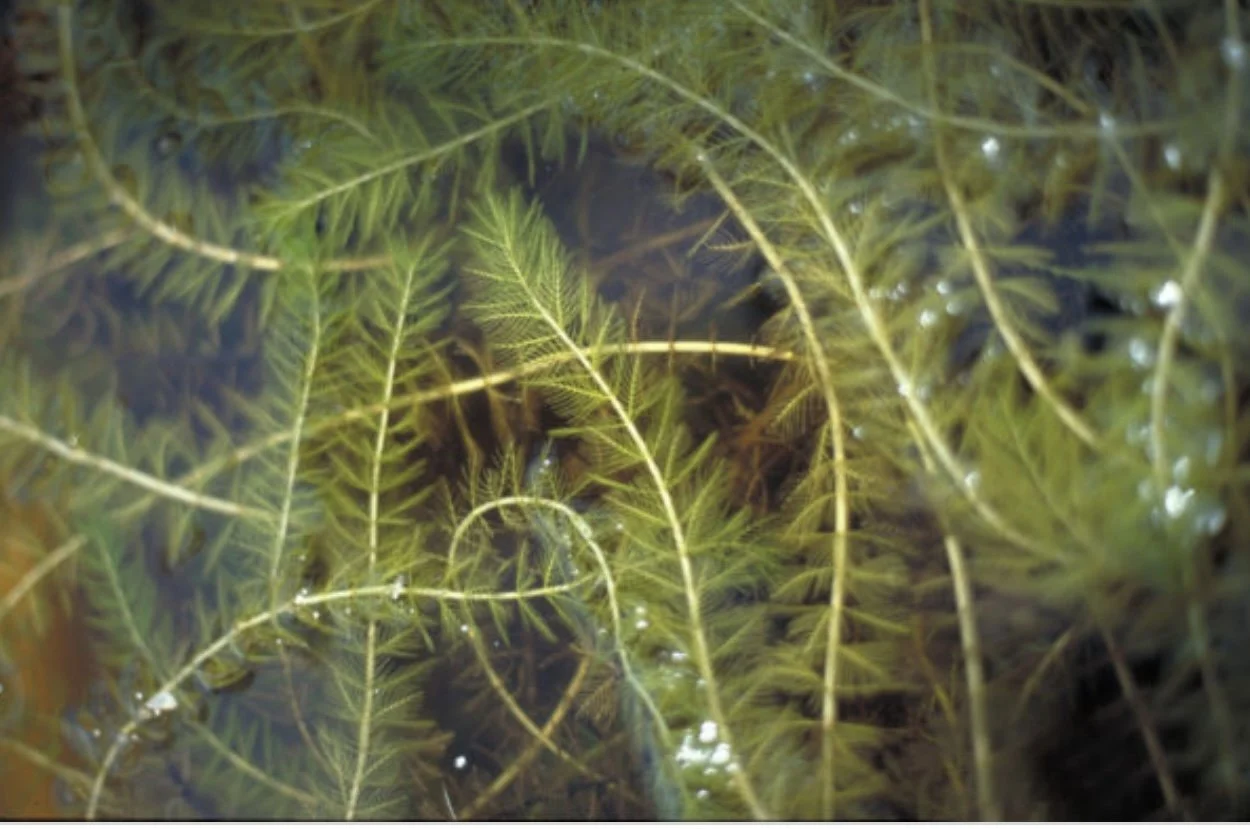
Eurasion Watermilfoil
Native to Europe, Asia and North Africa, Eurasian Watermilfoil (Myriophyllum spicatum), has been present in Québec waterways since 1958, and is now the number one aquatic invasive plant burden of lakes across Québec and Canada. It spreads very easily and can infest virtually any waterway because its feather-like leaves break off extremely easily and re-root themselves wherever they land.
Needing only nitrogen and sunlight to thrive, this plant has the capacity to spread to virtually any part of any fresh water system. It can grow up to 3-4 metres long, and can rapidly displace other submerged native aquatic plant species.
Since this plant has a well-developed leaf system around the stem, it can become extremely dense. By growing in densely packed colonies, watermilfoil creates a zone of stagnation to the point where the natural turbulence of the water becomes practically non-existent. As such, suspended particles present in the lake water get trapped within the milfoil clusters and in turn create new sediments rich in nutrition. This phenomenon is evident by a significant drop in oxygen at the sediment level.
The impacts from watermilfoil infestation are numerous. Heading the list is a loss in biodiversity and the nuisance to residents around the lake. With an increased risk of drowning, water skiing and swimming need to be avoided in the affected areas.
Eurasion watermilfoil can also cause major physical-chemical changes in the aquatic ecosystem. During winter, decomposing plants cause a partial de-oxygenation of the surrounding water which can cause the disappearance of numerous species of fish.
During summer, the plant re-grows to the surface thereby physically blocking natural water circulation. As a result, water becomes stagnant resulting in high levels of coliforms and other bacteria.
During photosynthesis of a large number of aquatic plants, the pH levels have a tendency to increase. We can therefore attain pH levels of 10 to 15 during the summer which can negatively affect the entire aquatic ecosystem.
Taking into account all these factors, we can begin to understand why this plant has become a real menace and a significant burden for our lakes.
The Asscociation funded a survey of lac St-Pierre in 2015, done by AVB7, that showed over 300,000 square metres of Eurasian Watermilfoil on our lake. We are actively pursuing projects involving viable methods of control and removal of this invasive aquatic species, and continue to encourage the provincial and municipal authorities to take the lead on addressing this problem.